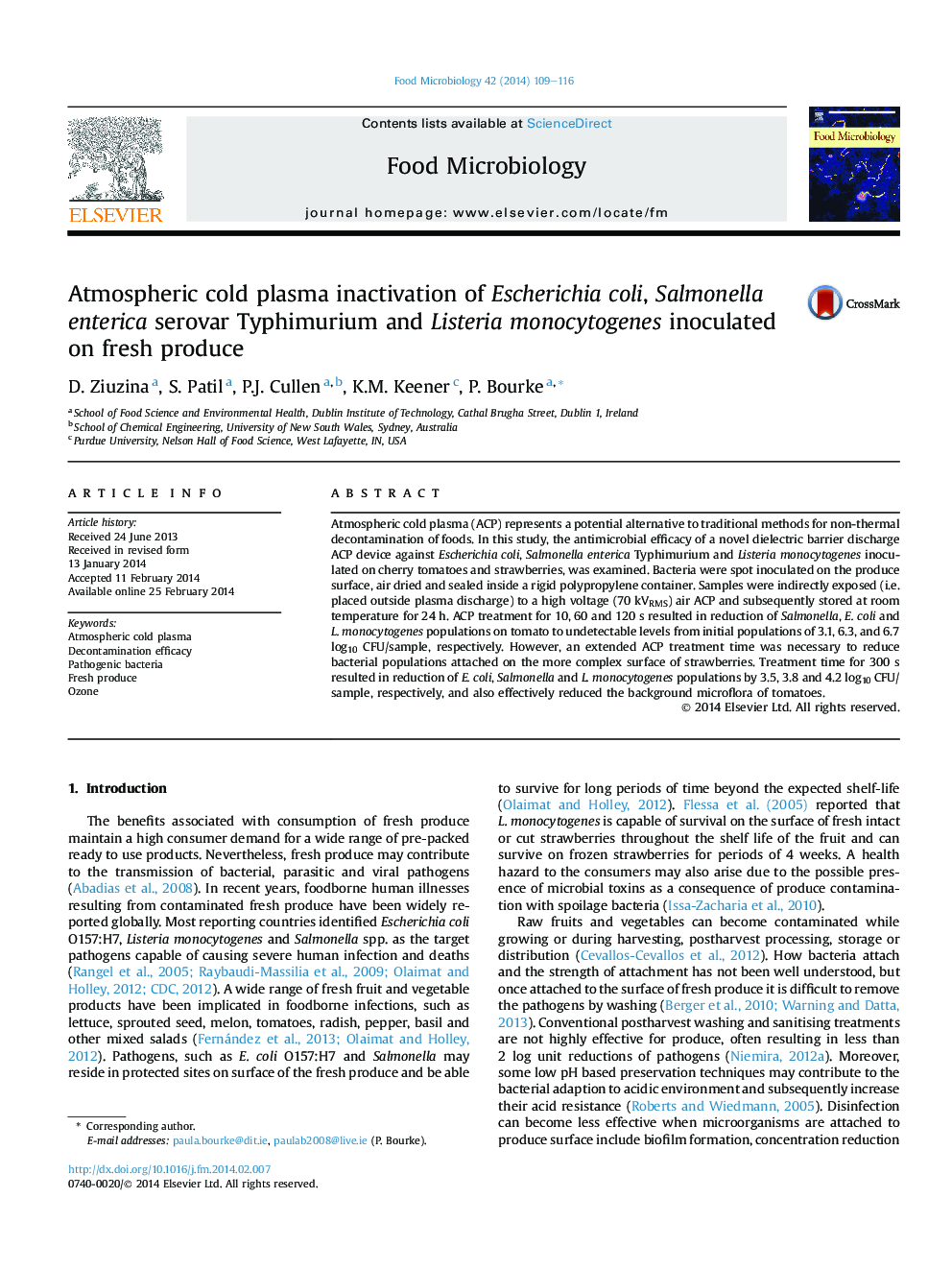| کد مقاله | کد نشریه | سال انتشار | مقاله انگلیسی | نسخه تمام متن |
|---|---|---|---|---|
| 4362889 | 1616257 | 2014 | 8 صفحه PDF | دانلود رایگان |

• In this study antimicrobial efficacy of ACP against.
• Escherichia coli, Salmonella enterica Typhimurium and Listeria monocytogenes inoculated on cherry tomatoes and strawberries was evaluated.
• Advantage of this treatment for in-package non-thermal decontamination approach is to eliminate post-processing contamination of the produce.
• This approach has potential to provide both increased microbiological food safety and extension of produce shelf life.
• Inactivation was however, dependent on fresh produce surface features and pathogen type.
Atmospheric cold plasma (ACP) represents a potential alternative to traditional methods for non-thermal decontamination of foods. In this study, the antimicrobial efficacy of a novel dielectric barrier discharge ACP device against Escherichia coli, Salmonella enterica Typhimurium and Listeria monocytogenes inoculated on cherry tomatoes and strawberries, was examined. Bacteria were spot inoculated on the produce surface, air dried and sealed inside a rigid polypropylene container. Samples were indirectly exposed (i.e. placed outside plasma discharge) to a high voltage (70 kVRMS) air ACP and subsequently stored at room temperature for 24 h. ACP treatment for 10, 60 and 120 s resulted in reduction of Salmonella, E. coli and L. monocytogenes populations on tomato to undetectable levels from initial populations of 3.1, 6.3, and 6.7 log10 CFU/sample, respectively. However, an extended ACP treatment time was necessary to reduce bacterial populations attached on the more complex surface of strawberries. Treatment time for 300 s resulted in reduction of E. coli, Salmonella and L. monocytogenes populations by 3.5, 3.8 and 4.2 log10 CFU/sample, respectively, and also effectively reduced the background microflora of tomatoes.
Journal: Food Microbiology - Volume 42, September 2014, Pages 109–116